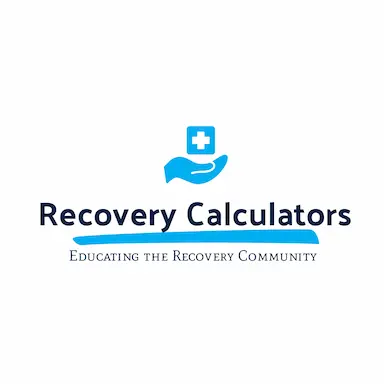In our ongoing efforts to support individuals through the complexities of opioid withdrawal, understanding tools like the Clinical Opiate Withdrawal Scale (COWS) is indispensable. This scoring system is not just a medical formality; it’s a vital component in the nuanced journey of recovery from opioid addiction. Opioid withdrawal can be daunting and deeply uncomfortable, yet managing it effectively is the first step towards a lasting recovery. The COWS score provides us with a critical, objective measure to assess the severity of withdrawal symptoms, enabling personalized and effective treatment strategies.
By quantifying withdrawal symptoms, the COWS score helps us tailor our interventions to meet the specific needs of each individual. This approach not only improves the comfort and safety of the process but also enhances the likelihood of successful recovery outcomes. In this capacity, the tool empowers us to address withdrawal with informed precision, ensuring each individual receives the appropriate level of medical and emotional support. Join us as we delve deeper into the practical application and significance of the COWS score in aiding those on their path to recovery.
What Is the COWS Score and Why Is It Important?
The Clinical Opiate Withdrawal Scale (COWS) is an essential tool in the realm of addiction recovery, particularly for individuals withdrawing from opioids. This tool is used widely by healthcare professionals to assess the level and severity of opiate withdrawal. The COWS score helps us to quantify the physical symptoms of withdrawal, ensuring that the treatment provided is adequately tailored to the patient’s specific needs. Why is this important? Because effective management of withdrawal symptoms can significantly improve the patient’s comfort and reduce the risk of relapse during the detox phase.
Understanding withdrawal severity through the COWS score enables us to apply interventions that are appropriately calibrated. For instance, if a person’s withdrawal symptoms are severe, we may decide to implement more aggressive pharmaceutical support to ease these symptoms. Conversely, milder symptoms might be managed with less intensive treatments. This precise adjustment in treatment strategy aids significantly in improving outcomes and encouraging commitment to a long-term recovery pathway.
Key Components of the COWS Score in Opioid Withdrawal
The Clinical Opiate Withdrawal Scale encompasses multiple components, each focusing on a different physical sign or symptom of withdrawal. Key aspects include measuring the patient’s heart rate, blood pressure, sweating, restlessness, pupil size, tremor, and gastrointestinal upset, among others. Each of these factors is scored independently and then combined for a cumulative score that dictates the withdrawal’s severity.
Heart rate, for example, is a critical indicator. An elevated heart rate can signal more severe withdrawal. Similarly, pupil size can provide key insights; dilated pupils are common in opioid withdrawal and score higher on the COWS. Understanding these components in-depth allows us to not only monitor withdrawal safely but also to intervene in a timely and scientifically sound manner. By systematically assessing each symptom, we ensure that no aspect of the patient’s discomfort is overlooked, facilitating a smoother and more humane detox process.
How to Properly Administer and Interpret the COWS Score
Administering the Clinical Opiate Withdrawal Scale (COWS) requires both precision and a deep understanding of its components. We begin by conducting a thorough assessment where each symptom is carefully evaluated. The process not only helps in rating the severity of opioid withdrawal but ensures that the management plan is precisely tailored to the individual’s current state. This detailed assessment should ideally be carried out in a quiet, controlled environment to ensure that the results are accurate and reflective of the patient’s true physiological state.
Interpretation of the COWS score involves more than just adding numbers. It requires an informed analysis of the combined symptoms and their intensities. Scores range generally from 0 to more than 36, with higher scores indicating more severe withdrawal symptoms. Proper interpretation helps us determine the necessity and intensity of intervention needed – whether it be medication-assisted treatment or supportive care measures. Our trained professionals are adept at analyzing these scores and translating them into actionable treatment plans that mitigate withdrawal symptoms and support the patient’s recovery journey.
Integrating COWS Score Results into Opioid Withdrawal Management
Once the COWS score has been determined, integrating these findings into a comprehensive management plan is the next critical step. This score guides our clinical decisions, from the selection of medications like buprenorphine or methadone to decisions about the level of monitoring required. For patients scoring in the higher ranges, we may intensify our monitoring to manage severe symptoms effectively. For those with lower scores, a less intrusive approach might be adequate, focusing on comfort measures and psychological support.
Our integration approach also emphasizes continuity of care post-detox, ensuring that patients are not only supported through the withdrawal phase but are also prepared for long-term recovery. By adapting our interventions based on the COWS score, we foster a smoother transition from acute detoxification to recovery phases, reducing the risk of relapse and promoting sustained sobriety.
Conclusion
At Recovery Calculators, we understand that managing opioid withdrawal is a delicate and complex process. That’s why we rely on the Clinical Opiate Withdrawal Scale (COWS) to guide our treatments, ensuring each patient’s needs are comprehensively assessed and appropriately addressed. Our commitment to using data-driven approaches like the COWS score exemplifies our dedication to providing the best care possible. Whether you’re beginning your recovery journey or looking for resources to support a loved one, we’re here to help. Reach out today to learn more about our services and how we can assist you or your loved one toward a successful recovery path.


